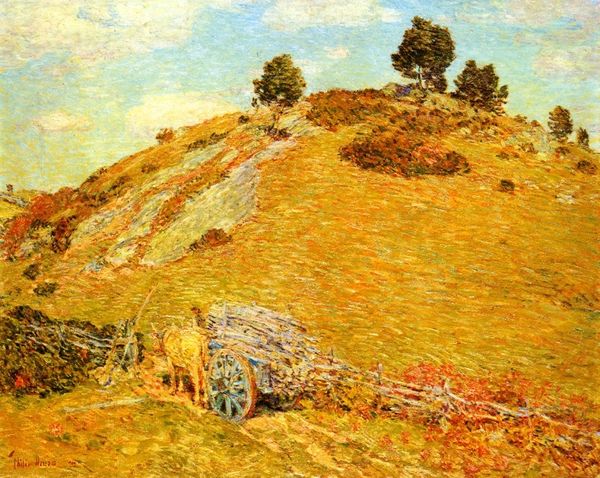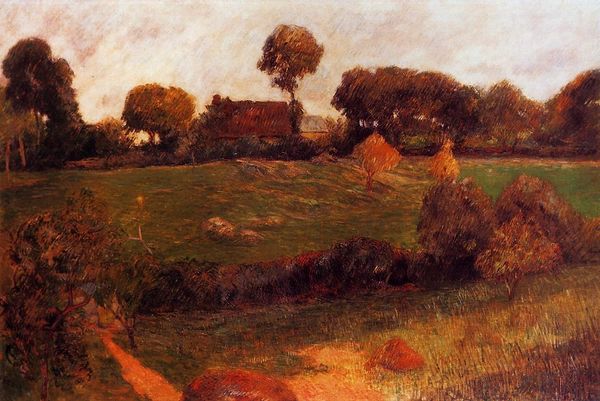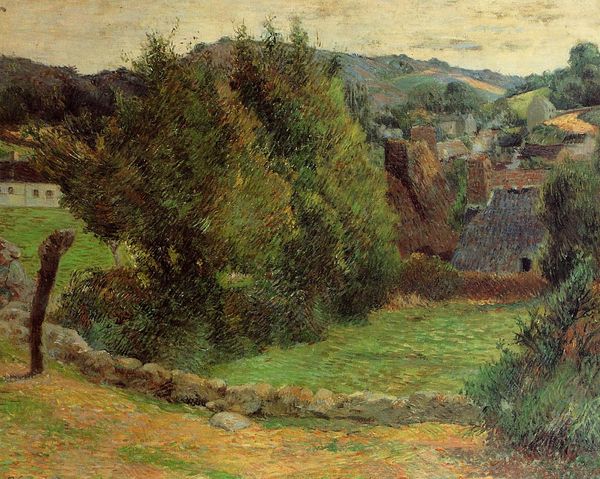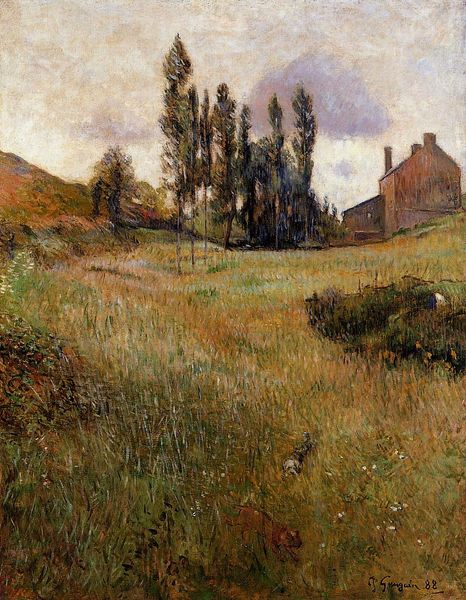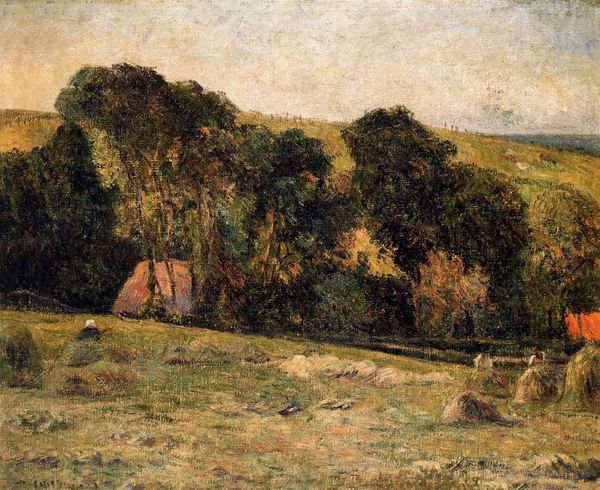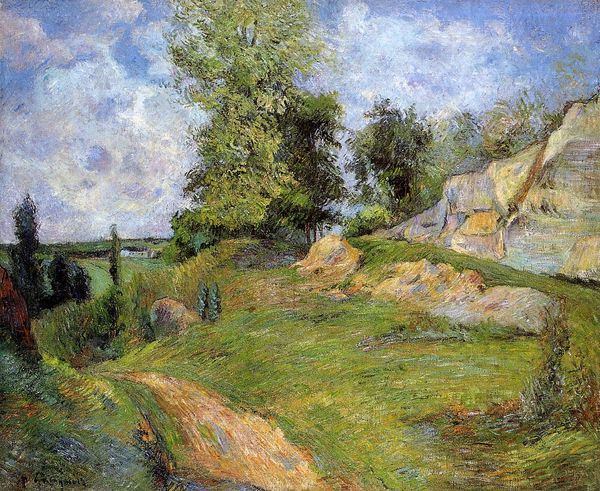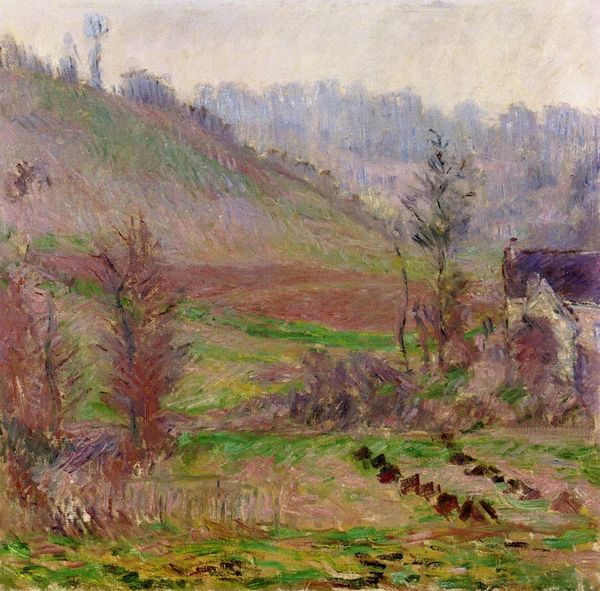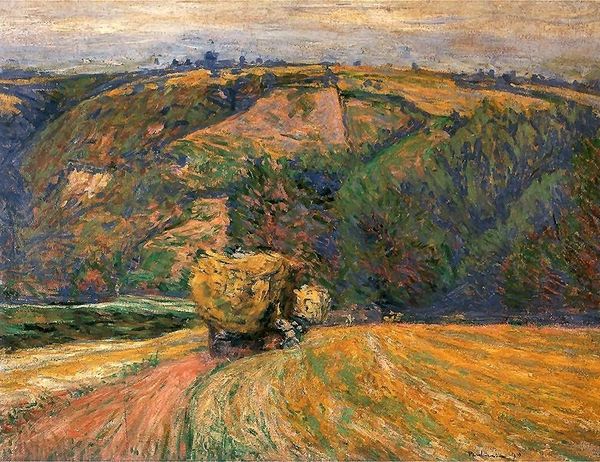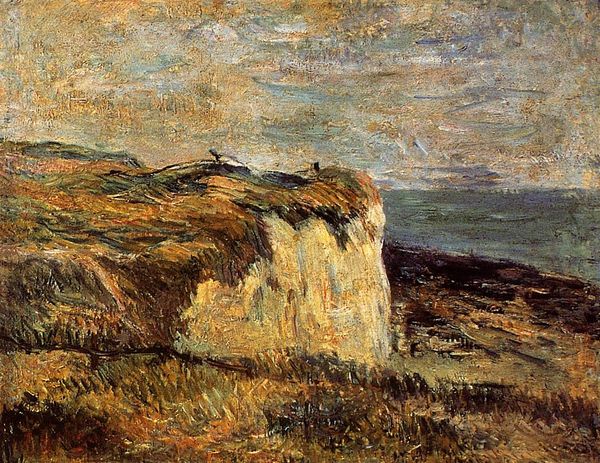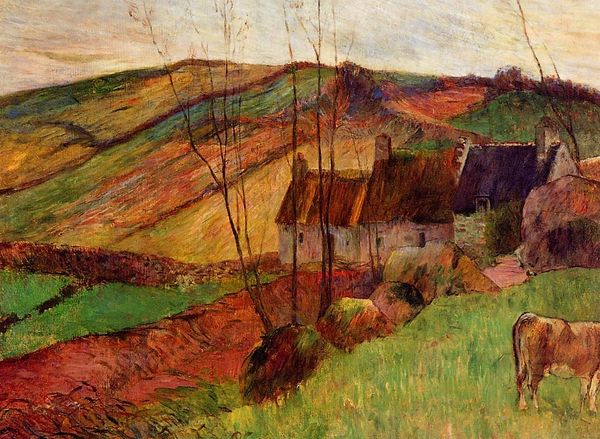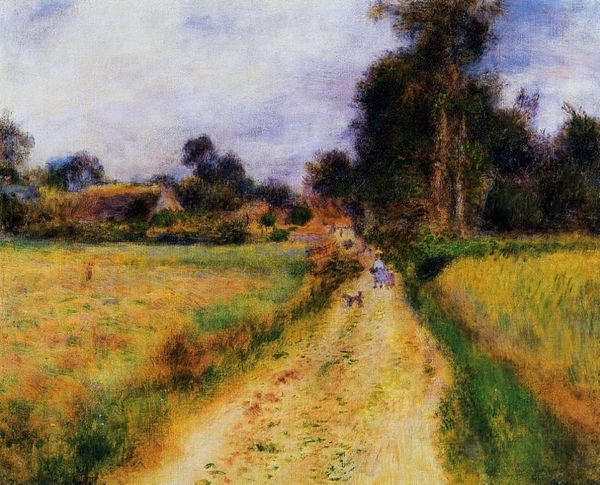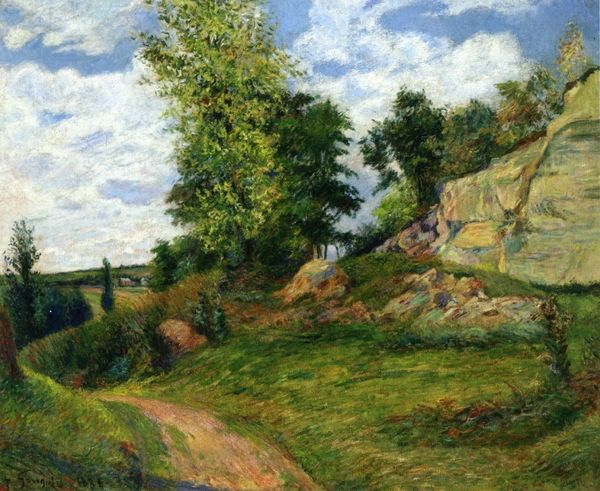
plein-air, oil-paint
#
plein-air
#
oil-paint
#
landscape
#
figuration
#
oil painting
#
rock
#
mountain
#
history-painting
#
post-impressionism
#
realism
Copyright: Public domain
Paul Gauguin's "Quarry Hole in the Cliff" presents us with a seemingly straightforward landscape, yet within its ochre and green hues lies a deeper resonance. The most prominent element is the dark cavity carved into the cliff face, an opening that evokes the imagery of the womb or the tomb. This motif of the cave, or artificial opening in the earth, echoes through art history, representing not just shelter but also transformation and rebirth. We see it in ancient burial chambers, in depictions of Christ's sepulcher, and even in modern art's exploration of the subconscious. The dark hole acts as a potent symbol, a site where the conscious mind confronts the unknown depths of existence. The emotional weight of this composition is palpable. The contrast between the warm, sunlit field and the cool, shadowed interior of the quarry creates a tension, drawing us into a psychological space where light and darkness, life and death, coexist. This interplay reveals a fundamental human experience—the cyclical nature of existence. The "Quarry Hole" is not just a landscape but a mirror reflecting our collective anxieties.
Comments
No comments
Be the first to comment and join the conversation on the ultimate creative platform.
